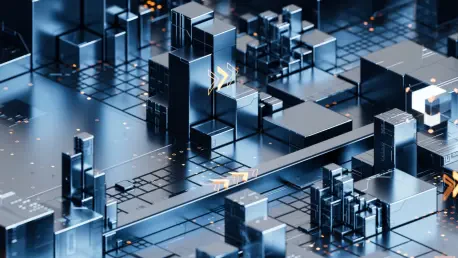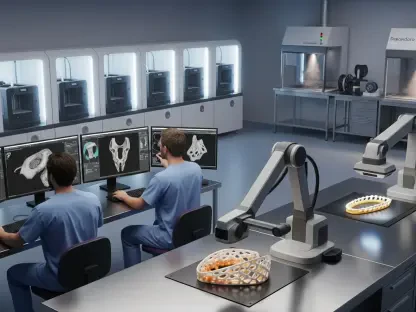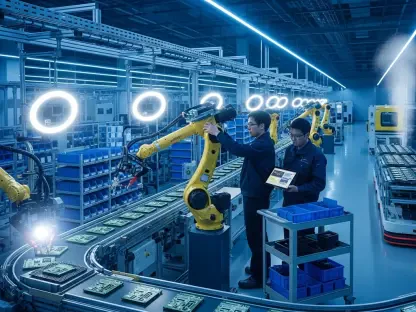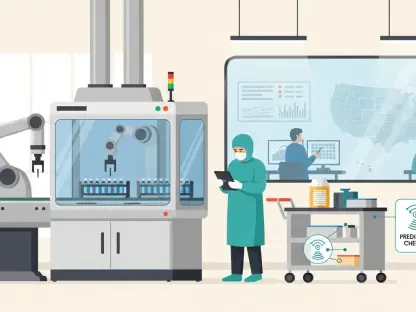As the digital landscape rapidly evolves, the security of critical infrastructure has become a top priority for Chief Information Security Officers (CISOs) worldwide. From energy grids to healthcare networks and transportation systems, these crucial sectors face heightened cyber threats that have progressed beyond minor disruptions toward dangerous levels of threat, often orchestrated by advanced and organized cybercriminal groups. As of 2025, the need for innovative strategies has become paramount to safeguarding these infrastructures. These strategies are not just about fortifying defenses but also about integrating predictive models, leveraging artificial intelligence, and fostering cross-sector collaboration to ensure societal stability amidst escalating cyber risks.
Embracing Proactive Cyber Defense
From Reactive Models to Predictive Strategies
With the complexity of cyber threats soaring, CISOs are now urged to shift from reactive security methods to more proactive, predictive strategies. Traditional cybersecurity measures, largely designed to react post-threat, have proven inadequate against today’s sophisticated attacks. Predictive strategies, built on advanced threat intelligence platforms (TIPs), have emerged as the cornerstone of modern defense methodologies. These platforms gather comprehensive data from a variety of sources, including dark web monitoring and machine-learning-driven anomaly detection, which provides a thorough understanding of potential threats. By analyzing this data, TIPs generate predictive insights that help identify and mitigate threats before damage can be inflicted—effectively transforming the approach from a reactive to a proactive stance.
Such predictive insights enable a more dynamic and robust defense posture. They allow CISOs to anticipate and prepare for cyber threats that might not be apparent when viewed in isolation. For instance, detecting abnormal patterns—like a sudden surge in phishing attempts coupled with unusual network activities—could indicate pre-attack reconnaissance. Consequently, by synthesizing such insights, organizations can adopt a more preemptive, rather than reactive, approach to cyber defense, allowing them to stop threats before they become existential risks.
Assumed Breach Simulations and Cross-Sector Collaboration
A proactive stance further involves conducting “assumed breach” simulations, which model potential attack scenarios to expose vulnerabilities in operational technology (OT) environments. These exercises simulate real-world attacks, allowing IT security teams to identify weak points and implement necessary mitigation measures ahead of time. Through these simulations, organizations can enhance their threat preparedness, ensuring that their defense mechanisms are resilient and up to date against evolving tactics employed by adversaries. The goal is to understand how attackers might breach defenses and to take preventive measures to prevent such breaches from happening.
Collaborating with Information Sharing and Analysis Centers (ISACs) complements these efforts by offering increased visibility into emerging threats. ISACs facilitate the exchange of vital cybersecurity information across different sectors, thus enabling organizations to keep track of the latest threats and incorporate that knowledge into their defense strategies. Such collaboration is crucial for addressing sophisticated threats like AI-generated deepfakes that can target supply chain vendors with remarkable precision. By engaging in these collaborative efforts, CISOs can tap into a rich pool of intelligence, providing a broader understanding of the threat landscape and allowing for a more comprehensive defense strategy.
The Five Pillars of Cyber-Physical Defense
AI-Powered Threat Hunting and Zero Trust Principles
To confront contemporary cyber-physical threats, integrating AI-powered threat hunting with Zero Trust principles has become essential. AI-driven systems serve as autonomous agents that continuously monitor industrial control systems (ICS), significantly reducing dependency on human analysts. These systems utilize advanced behavioral analytics to pinpoint anomalies, thereby identifying threats that might otherwise go unnoticed. By detecting deviations in standard operation patterns, AI-powered systems can alert security teams to potential intrusions promptly, facilitating timely interventions.
Simultaneously, Zero Trust principles advocate for robust security measures that challenge conventional norms such as “air-gapped” security. They emphasize micro-segmentation, ensuring that networks are divided into secure segments, and continuous authentication, which limits access to sensitive systems. This approach is crucial for preventing unauthorized access to vital assets, such as grid control systems, and minimizing the potential impact of a compromised system within operational technology environments. By adopting these principles, organizations can build a more secure infrastructure designed to withstand even the most sophisticated cyber threats.
Quantum-Resistant Cryptography and Secure IoT Procurement
As technology advances, so does the necessity to adapt to new cryptographic challenges. The development of quantum computing has heightened the demand for quantum-resistant cryptography, pivotal for securing critical data transmissions and firmware updates. Implementing post-quantum algorithms, such as lattice-based cryptography, ensures communications, especially in sectors like the energy grid, remain secure against potential quantum threats. This transition to quantum-resilient solutions is important for maintaining the integrity of infrastructures reliant on digital communication channels.
Securing the procurement of Internet of Things (IoT) devices is equally significant in modern cyber-physical defense strategies. By adhering to robust frameworks like ISA/IEC 62443, organizations can ensure that industrial IoT devices are secure by design. This includes embedding security features within the hardware itself, preventing vulnerabilities that could be exploited by malicious actors. Furthermore, by incorporating over-the-air patching capabilities, organizations can address security threats swiftly, ensuring devices continually comply with the latest security standards. This proactive stance in IoT procurement fortifies infrastructure against potential cyber intrusions, reinforcing overall system integrity.
Building Cyber Resilience for 2025
Adaptive Governance and Automated Incident Response
Building a resilient infrastructure isn’t solely about erecting strong defenses; it requires adaptive governance that allows organizations to swiftly recover from inevitable breaches. Effective governance strategies prioritize agility, enabling rapid incident response and ensuring contingency measures align with business continuity goals. This alignment safeguards essential operations, such as backup power supplies or manual control protocols, thereby preserving the functionality and integrity of critical infrastructure.
To enhance incident response, Security Orchestration, Automation, and Response (SOAR) platforms are invaluable. These technologies facilitate real-time automation of threat responses, significantly reducing reliance on manual intervention. Through predefined playbooks, SOAR platforms can isolate compromised nodes and initiate shutdown procedures more efficiently than human operators, providing quicker mitigation of threats. This level of automated response ensures that disruptions can be addressed swiftly and effectively, minimizing potential fallout and preserving system resilience.
Bridging the IT/OT Skills Gap and Decentralized Disaster Recovery
As the digital environment evolves rapidly, ensuring the security of vital infrastructures has become a critical concern for Chief Information Security Officers (CISOs) globally. Sectors like energy grids, healthcare systems, and transportation networks confront increasingly sophisticated cyber threats. These threats go beyond mere disturbances, reaching levels that endanger entire systems due to the actions of organized and advanced cybercriminal groups. With the 2025 deadline approaching, devising innovative strategies is essential for protecting these vital infrastructures. It involves not merely enhancing defenses but also incorporating predictive models, utilizing artificial intelligence, and promoting collaboration across various sectors to maintain societal security amidst the growing cyber risks. This holistic approach ensures that as threats grow more complex, solutions are both anticipatory and adaptive, safeguarding critical sectors for future generations and aligning with global security standards.









